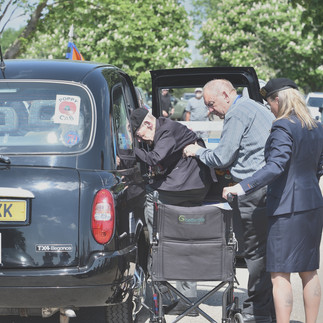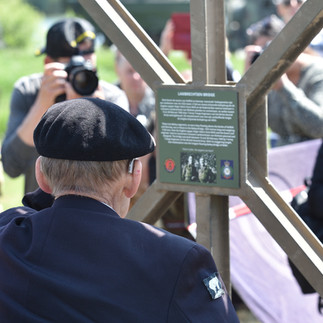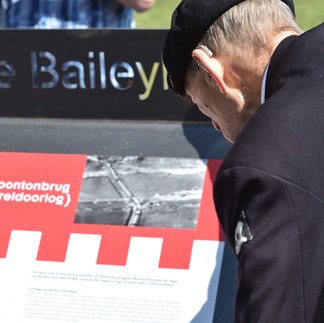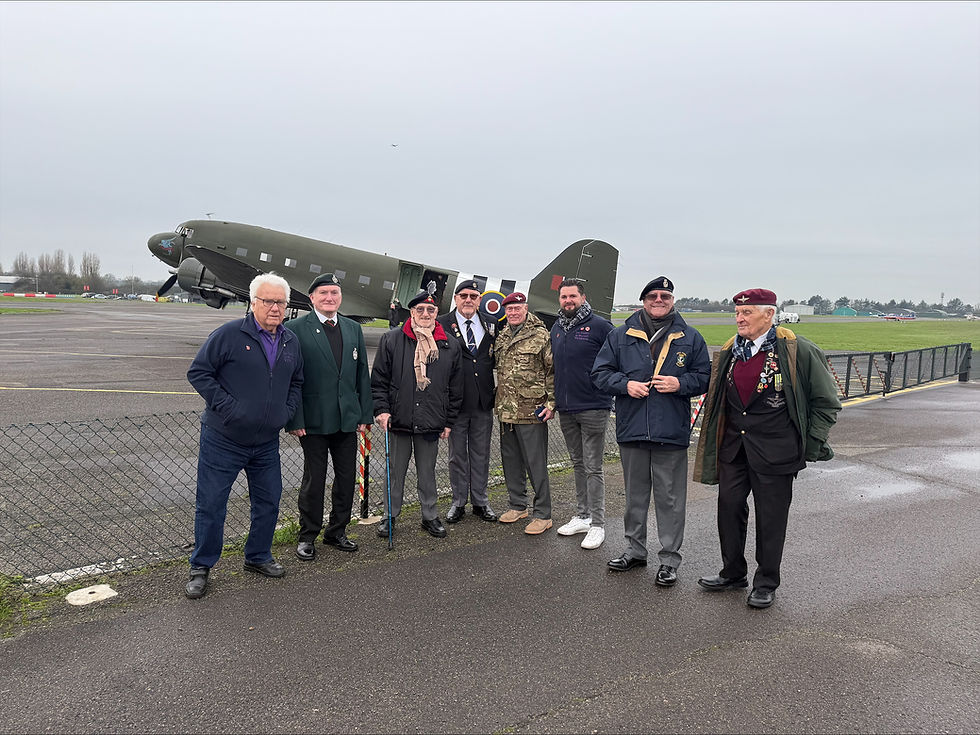WWII veteran, Major Edwin ‘Ted’ Hunt MVO, honoured in the Netherlands
- taxicharity
- May 13, 2022
- 3 min read

Major Ted Hunt’s contribution to the building of the longest floating Bailey bridge of WWII was celebrated in Gennep on 11 May
Major Ted Hunt MVO (102), from Worthing, was taken to the Netherlands by the Taxi Charity to celebrate Dutch Liberation on 5 May. When the rest of the group returned to the UK, Major Ted and his driver, Mike Hughes, stayed behind to attend the event in Gennep.
London cabbie and Taxi Charity volunteer, Mike, said: "What Major Ted didn’t know was that the event he was attending today was not purely to commemorate building the Bailey bridge during WWII but was primarily to thank Ted for his contribution to this amazing feat of engineering. Keeping this secret from him for several months has not been easy but seeing the joy on his face when the penny dropped that he was the guest of honour, and the day was for him, was something I will never forget."
The wording on the sign at the site of the Bailey bridge says:
These two bridge segments are a tribute to the 1,222 metre, 1126-ton Bailey bridge, that English Sapper Major Edwin Hunt MVO and Dutch Civil Engineer reserve Lieutenant Constant Lambrechtsen van Ritthem planned and designed. The bridge was built between the 12 and 20 February 1945 by 7th Army Engineers of the British Second Army and this masterpiece was the longest floating Bailey bridge of WWII."
Major Ted said: "It was wonderful to be here today to celebrate the courage and skill of a very brave Dutchman. It was an honour for me to work with him and it is lovely for the people here today to see and recognise the result of what he did. The bridge at Gennep was the lifeline of the war as it moved on into Germany. Constant is the man to be admired - I was just his dogsbody."
Dick Goodwin, vice president of the Taxi Charity, said: "Ted is a very humble man and does not take much credit for his part in the Bailey bridge at Gennep but his advice and help in the building of this significant bridge is one of the major turning points in the final stages of the war in Europe. The Taxi Charity has brought Ted back to the Netherlands on many occasions, and it was an absolute pleasure and privilege to be here with him today."

About Major Ted Hunt MVO
Before the war, Ted worked as waterman on the River Thames and volunteered as a Sapper waterman in the Royal Engineers and served in the Battles of Narvik in Norway. In 1944, he commanded 15 of the Rhino ferries on Gold Beach on D-Day. In four months, all 64 of these landing craft put ashore 93,000 tanks, guns and vehicles and 440,000 tons of military stores.
During the last six months of the war in Europe, together with the Dutch hydraulics engineer Lt. C. Lambrechtsen van Ritthem, he advised the Chief Engineer Second Army, Brigadier "Ginger" Campbell, on the "opposed crossing of water obstacles", so that the longest floating Bailey bridge of WWII could be constructed at Gennep in the Netherlands.
For more about Major Ted, visit his Wikipedia page:
About The Gennep Bailey Bridge
In February and March 1945, the British Royal Engineers constructed a 1-kilometre long Bailey bridge between Oeffelt and Gennep. A magnificent technical achievement, acknowledged by the visits of Churchill and Montgomery, it was the longest floating Bailey bridge of WWII across the River Maas and enabled the progress of Operation Veritable into Germany.






















